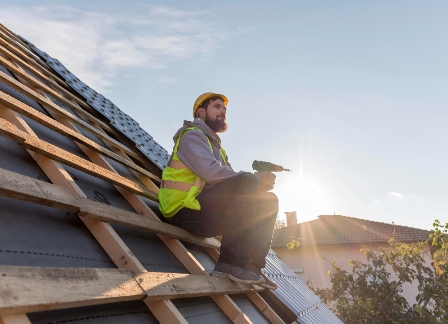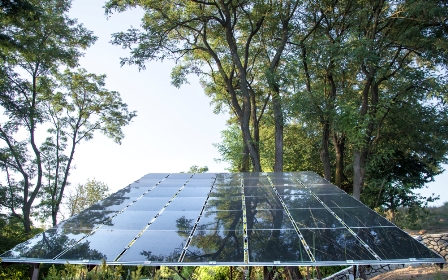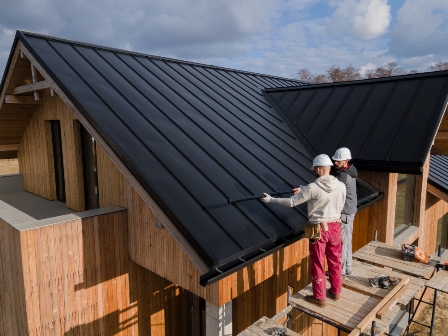Roofing disasters are more than just leaks and structural damages; they are tales of homeowners facing unexpected challenges, often leading to significant financial and emotional burdens. In this article, we will delve into real-life stories of roofing disasters and the invaluable lessons they offer.
Common Roofing Issues
Leaks and Water Damage
One of the most prevalent issues in roofing disasters is water infiltration. Leaks not only compromise the structural integrity of a home but also pave the way for mold growth, posing health risks to its occupants.
Poor Installation Practices
Faulty installation is another culprit behind many roofing nightmares. From improperly secured shingles to subpar sealing, the consequences of a poorly installed roof can be devastating.
Weather-Related Damages
Extreme weather conditions, from hailstorms to hurricanes, can wreak havoc on roofs. Understanding how weather impacts roofing materials is crucial in preventing potential disasters.
Lessons Learned
Importance of Professional Inspection
Regular inspections by certified professionals can catch potential issues before they escalate, saving homeowners from costly repairs.
Quality Materials Matter
Cutting corners on materials can lead to long-term problems. Investing in high-quality roofing materials is a safeguard against future disasters.
Hiring the Right Contractor
Choosing a reputable and experienced contractor is critical. The Smiths’ case study serves as a reminder that the true cost of roofing disasters often stems from poor workmanship.
Preventive Measures
Regular Roof Inspections
Implementing a routine inspection schedule can identify and address issues promptly, preventing them from becoming disasters.
Proper Installation Guidelines
Adhering to proper installation practices, including securing shingles and ensuring proper sealing, is fundamental in preventing future problems.
Weather-Resistant Roofing Materials
Selecting materials designed to withstand local weather conditions is essential for a durable and disaster-resistant roof.
Burstiness in Roofing Disasters
Unpredictability in Roofing Issues
Roofing problems often arise unexpectedly, emphasizing the need for homeowners to be prepared for the unpredictable nature of these disasters.
Addressing Emergency Situations
Having an emergency plan in place can mitigate the impact of sudden roofing disasters. Quick action can prevent further damage and reduce the overall cost of repairs.
Perplexity in Roofing Solutions
Navigating Complex Roofing Problems
Some roofing issues require intricate solutions. Professional guidance is essential when faced with complex problems, ensuring an effective resolution.
The Role of Professional Guidance
Roofing professionals bring expertise to the table. Consulting with them during decision-making processes can provide clarity in navigating perplexing roofing situations.
The Human Element in Roofing
Emotional Toll of Roofing Disasters
Beyond the structural impact, roofing disasters take an emotional toll on homeowners. Acknowledging and addressing these emotional aspects is integral to the recovery process.
Rebuilding and Recovery
The journey after a roofing disaster involves not only physical reconstruction but also emotional recovery. Homeowners should be prepared for the challenges that come with rebuilding.
Roofing Industry Innovations
Advancements in Roofing Technologies
Innovations in roofing technologies, such as smart roofing systems and sustainable materials, are contributing to more resilient and eco-friendly roofing solutions.
Sustainable Roofing Practices
The shift towards sustainable roofing practices not only benefits the environment but also enhances the durability and longevity of roofs.
FAQs
A: It’s recommended to have your roof inspected annually, with additional checks after severe weather events.
A: While some minor repairs can be DIY, it’s advisable to consult with a professional to ensure proper and lasting solutions.
A: Signs include loose or missing shingles, leaks, and visible signs of poor workmanship.
A: Weather-resistant materials can withstand harsh elements, reducing the likelihood of damage and extending the lifespan of your roof.
A: Initially, sustainable materials might have a higher upfront cost, but the long-term benefits, both environmentally and financially, often outweigh the initial investment.
Conclusion
Roofing disasters are cautionary tales that underscore the importance of proactive measures, from regular inspections to the selection of high-quality materials and professional guidance. By learning from real-life stories, homeowners can fortify their roofs against unexpected challenges, ensuring a secure and resilient home.






